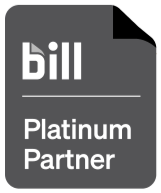What Are the Four Basic Financial Statements in Accounting?
If you own a small business, you understand the importance of keeping your financial information organized. There are four basic types of financial statements used to do this: income statements, balance sheets, statements of cash flow, and statements of owner equity. You probably also know that bookkeeping can be a headache. If you are trying to make managing your company as easy and seamless as possible, it’s helpful to understand the four most common business financial statements. You can even download templates of these statements. Learn more about the details of the four statements and other components of financial reporting and you’ll have a greater understanding of what’s needed from your accounting team.
Income Statement
One of the four types of financial reports is the income statement, which shows net income or net loss. This type of statement tracks all of the money coming in and all the money going out. Money paid out is called expenses, and money coming in is called revenue. When the expenses exceed the revenue, the income statement will show a net loss. The income statement is broken down into categories, including:
- Sales
- Operating expenses
- Non-operating expenses
Operating expenses include things like advertising and rent for office space. Non-operating expenses can include a one-time purchase and interest on borrowed money. Sales encompass the cost of all goods sold.
Balance Sheet
The balance sheet is another one of the four types of financial statements, and of all the types of financial statements out there, this one seems to be the most ignored. Entrepreneurs are fascinated by the income statement but turn a disinterested eye to other components of financial reporting like the balance sheet. It’s unfortunate, too, because this is one of the most important types of financial reports.
The balance sheet contains assets, liabilities, and owners’ or shareholders’ equity. The assets include cash, property, inventory, and anything else owned by the company. Assets are listed on the left side of the balance sheet. Liabilities and equity are listed on the right side. Liabilities include accounts payable or any type of payment made on a long-term loan.
The owners’ or shareholders’ equity is established when the amount of liabilities is subtracted from the amount of assets. The reason it’s called a balance sheet is because the formula should always look like this:
- Assets = Liabilities + Shareholders’ Equity
Statement of Cash Flow
The third of the four major financial statements is the statement of cash flow. This business financial statement tries to accomplish one thing: tell you where all of your cash went. The components of financial reporting can get a little complicated on this one, so it may be hard to understand if you don’t have four years of accounting education. The number of categories on this statement will be different depending on the size of the company. For larger companies, the categories include:
- Operating activities
- Investing activities
- Financing activities
- Supplemental information
For smaller companies, there are only two categories: cash inflows and cash outflows. The basic principle of the statement of cash flow is to know and understand exactly where cash is flowing in from and where it is flowing out to. It enables the company to see if they are spending more than they are earning or vice versa. If the amount of cash is consistently more than the net income, it means the company’s net earnings are “high-quality.”
Statement of Owner’s Equity
If there are any changes in the owner’s equity between accounting periods, they are listed on the statement of owner’s equity, the fourth of the major business financial statements. The key components listed on this statement include:
- Beginning equity balance
- Additions and subtractions
- Ending balance
The additions and subtractions are for a particular period and can include things like net income, dividend payments, and withdrawals.
Get Help for Your Small Business
So what are the four basic financial statements you need? Typically, you’ll need all four: the income statement, the balance sheet, the statement of cash flow, and the statement of owner equity. By preparing these four accounting financial statements, you will be able to see how well your company’s finances are doing or find areas that need improvement. If you don’t have the required time or understanding of financial statements, online services like ours can help. If you’re looking for an outsourced firm, be sure to check out our financial team.
Lean More About Types of Financial Reports
- What Is an Accounts Receivable Aging Report?
- What Is an Accounts Payable Aging Report?
- What Are Cash Flow Statements?
- What Are Managerial Accounting Reports?
- What Are Common Business Expenses?
- How to Keep Track of Business Expenses
Written by Eddy Hood









.png)




